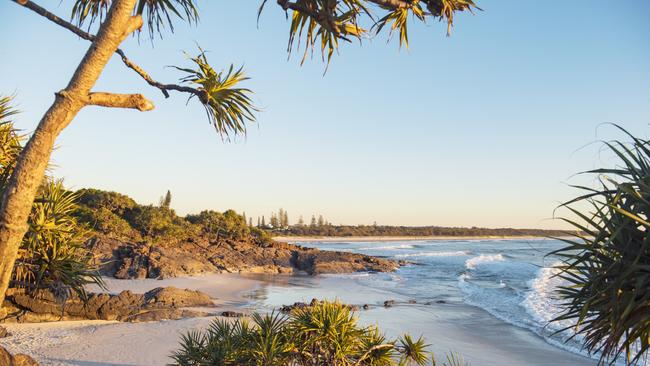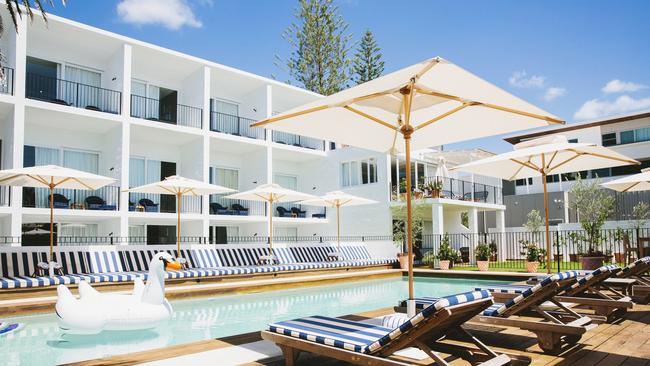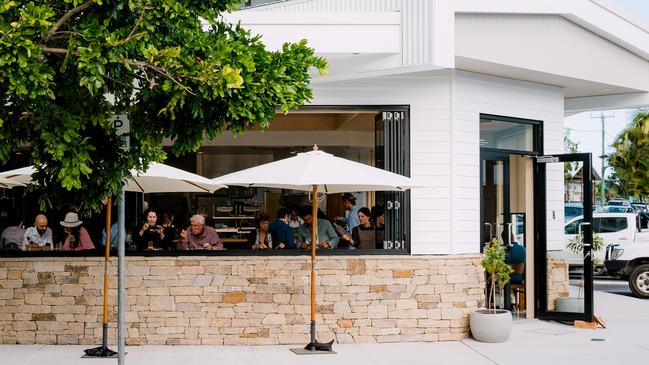The northern NSW beach destination that’s becoming increasingly popular
A northern NSW beach, which was overlooked by travellers for years, was named number one in the country – with the whole area gaining rapid popularity.
As a teenager growing up in the Byron hinterland, the Tweed Shire was no more than a monotony of green separating me from the excitement of the Gold Coast’s shopping malls. Long before the M1 upgrade broke ground, the seemingly endless and winding drive through iridescent cane fields and frayed ribbons of beach scrub probably saved me from many questionable ’90s fashion purchases.
It also saved the Tweed from premature exposure to holiday hunters. Perpetually ignored in favour of its flashier neighbours, it was able to quietly develop its potential between those twin tourist hot spots of Byron Bay and the Gold Coast.
While they became overstuffed with cash-splashing families, wedding parties and resident celebrities, the Tweed shyly blossomed. Preferring its caravan parks to be taken over by sandy, Paddle-Pop-licking kids on bikes and their stubby-cooler-holding parents.
Sprawling from enviable beaches and following the Tweed River through patchworked sugarcane fields, down valleys and along ridges to the peaks of lofty Mount Warning-Wollumbin, the Tweed Shire is a coastal haven of lush hinterland pockets, quiet beaches and a refreshingly casual pace.

For more stories like this, visit Escape.
Naturally, places this good don’t stay secret for long. The Tweed’s humble, low-key chill couldn’t disguise its staggering beauty with its “nothing to see here” attitude forever.
My forehead-slapping “of course!” moment came in 2015, when I visited for the opening of Halcyon House.
Liberating a dilapidated old surf motel with refined Capri-esque style, the savvy hoteliers dropped the first pin on the Tweed, revealing this under-the-radar beauty. It wasn’t long before those red beacons propagated on Google Maps like a teenage breakout.
Now there’s an ever-growing number of incredible experiences to be mined here, from accommodation to brilliant dining and excursions in nature.
Indeed, last year Cabarita Beach was named the best in Australia. Shouldered by a boardwalked, grassy headland with frolic-friendly shallows and crystalline waves, it’s a worthy adversary to Byron’s famous Wategos.

“We can claim that over Byron!” declares local Ben Devlin of the accolade. The notable chef grew up in the area, but left to pursue a career in Brisbane and beyond, even spending two years at famed Noma in Copenhagen. He initially returned for a six-month contract as executive chef at Halcyon House’s impeccable restaurant, Paper Daisy.
Five years later, he still hasn’t retreated north, but instead has stayed to establish his own restaurant, Pipit, in tiny beachside Pottsville.
A chic, provenance-focused diner Ben opened with his wife, Yen, Pipit showcases the best produce of the region, from seafood to tropical fruits. He says that despite the Tweed’s fast-growing popularity, part of the appeal is that it still feels like a hidden gem.
“Rather than one main centre, it’s more spread apart,” he says.
“There’s more room to breathe with a network of beach towns, such as the stretch of Kingscliff, Cabarita, Hastings and Pottsville, all with their own identity but still a collective group.”
Ben’s hyper-local approach at Paper Daisy, and now Pipit, has no doubt inspired many restaurateurs and diners to consider the Tweed as a destination that appreciates a well-considered menu.

From casual eateries such as Lolita’s Cantina and Osteria in Casuarina to fine diner Fins at Kingscliff and the recent lauded openings of breezy Colonial-esque Tweed River House in Murwillumbah, and the Italian-accented Cabarita diner No 35 Kitchen and Bar, the good food movement is clearly gathering momentum.
Not to mention the city-worthy cafes reclaiming what has historically been extra-hot-mugachino territory. And then there’s the next-gen producers taking full advantage of the Tweed caldera’s fertile soils.
Drive inland to the elegant Husk Distillers cellar door at Tumbulgum for lunch on the lawn and try their iridescent Ink Gin and spiced rum and you’ll begin to grasp the huge, barely-tapped potential of the region.
But people are catching on quick, slapping their own foreheads in the realisation they could have been holidaying here all along.
Making up for lost time, you’ll find them at Cudgen’s Earth Brewery for sundowners, where this community-focused, low-impact business is all about collaborating with local suppliers and using what’s on hand to brew its ales.
And also in Cudgen, those who once dismissed the Tweed (including me) can be found at the bucolic Farm & Co, enjoying a coffee, picking sunflowers and meeting a vegan pig.
Drawing day-trippers south from the Gold Coast and Brisbane and even northwards from restaurant-spoiled Byron, the food and drink scene is undeniably on the rise, but it’s not the sole reason people are enraptured with their new Tweed discovery. Its mountain-to-sea beauty makes it a region of gobsmacking natural assets and there is still that intangible element here that neighbouring shires have long since lost – it’s quiet.

Local photographer Vanessa Brown loves the crowdless beaches and afternoon hinterland light. After spending more than a decade in Sydney as a medical researcher, Vanessa moved back to the Tweed 13 years ago.
Returning to Cabarita with her husband and three children, she soon discovered not only a renewed love for the area, but also a passion for photography. Her stunning drone shots of the Tweed unfurl a landscape of crystal waters encroaching on sea-bitten cliffs and the uniform mess of coastal bushland dissected by white-sand paths.
Her city friends bemoaned her move, but Vanessa has no regrets about her sea change. Even if finding a carpark at that now-famous beach is a little more difficult these days.
“When we first moved back, there wasn’t even a coffee shop in Cabarita. You had to get in the car and drive to virtually everything,” she says, of the change triggered by the new wave of tourism.
“But even now, I’ll take the dog for a walk on the beach and won’t see another person. It’s still not quite as discovered,” she says.
For Devlin, there was never a question of if the Tweed would be discovered.
“When one place gets too popular or expensive, you see the ripple effect in neighbouring areas. Towns outside of Byron are feeling that. But it’s not competitive here; it feels more collaborative and that will be its strength,” he says.

It already feels as though the region has learned a thing or two about sustaining tourism from those matured holiday hot spots to the north and south.
The Tweed is in no hurry to change its barefoot, friendly holiday vibes, despite its undeniable new-found swagger. It’s funny how time changes perceptions.
All the things I found dreary about this shire as a youth – the endless green, quiet beaches, surf-side takeaway joints with sun-faded ice-cream signs – I now relish.
So come and enjoy this hot spot for its new spit-and-polish, but also come to appreciate it for being exactly what its neighbouring shires are not.
Top Tweed Coast accommodation
Hideaway Camp: Glamp in a stylish tent by the beach.
Origin House: This sleek hinterland house is set on a working coffee plantation.
Halcyon House: The ultra-hip hotel that helped put the Tweed on the radar.


